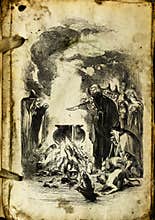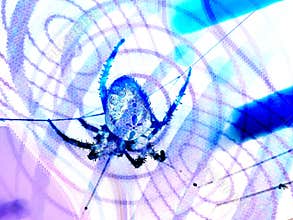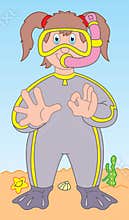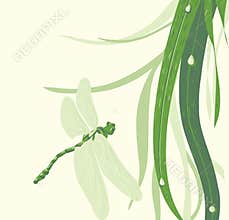Antique Engraved Illustration Of The Wild Duck. Vintage Illustration Of The Wild Duck. Old Engraved Picture Of The Bird. The Mallard Or Wild Duck (Anas Platyrhynchos) Is A Dabbling Duck That Breeds Throughout The Temperate And Subtropical Americas, Eurasia, And North Africa, And Has Been Introduced To New Zealand, Australia, Peru, Brazil, Uruguay, Argentina, Chile, Colombia, The Falkland Islands, And South Africa. This Duck Belongs To The Subfamily Anatinae Of The Waterfowl Family Anatidae. Males Have Purple Patches On Their Wings, While The Females (Hens Or Ducks) Have Mainly Brown-Speckled Plumage. Both Sexes Have An Area Of White-Bordered Black Or Iridescent Blue Feathers Called A Speculum On Their Wings Males Especially Tend To Have Blue Speculum Feathers. The Mallard Is 50 65 Cm (20 26 In) Long, Of Which The Body Makes Up Around Two-Thirds The Length. The Wingspan Is 81 98 Cm (32 39 In) And The Bill Is 4.4 To 6.1 Cm (1.7 To 2.4 In) Long. It Is Often Slightly Heavier Than Most Other Dabbling Ducks, Weighing 0.7 1.6 Kg (1.5 3.5 Lb). Mallards Live In Wetlands, Eat Water Plants And Small Animals, And Are Social Animals Preferring To Congregate In Groups Or Flocks Of Varying Sizes. The Female Lays 8 To 13 Creamy White To Greenish-Buff Spotless Eggs, On Alternate Days. Incubation Takes 27 To 28 Days And Fledging Takes 50 To 60 Days. The Ducklings Are Precocial And Fully Capable Of Swimming As Soon As They Hatch.
ID 56139975585 © Romannerud | Megapixl.com
CATEGORIES
Sharing is not just caring, it's also about giving credit - add this image to your page and give credit to the talented photographer who captured it.:
KEYWORDS
zoology world vintage textbook retro picture old nature natural image illustration history heritage graphic forest engraving engraved drawing culture creature books book artwork archival antiquity antique animals animal ancient aged 19th 1800s black bird wildlife biology wild ornithology gastronomy duck mallard female











































